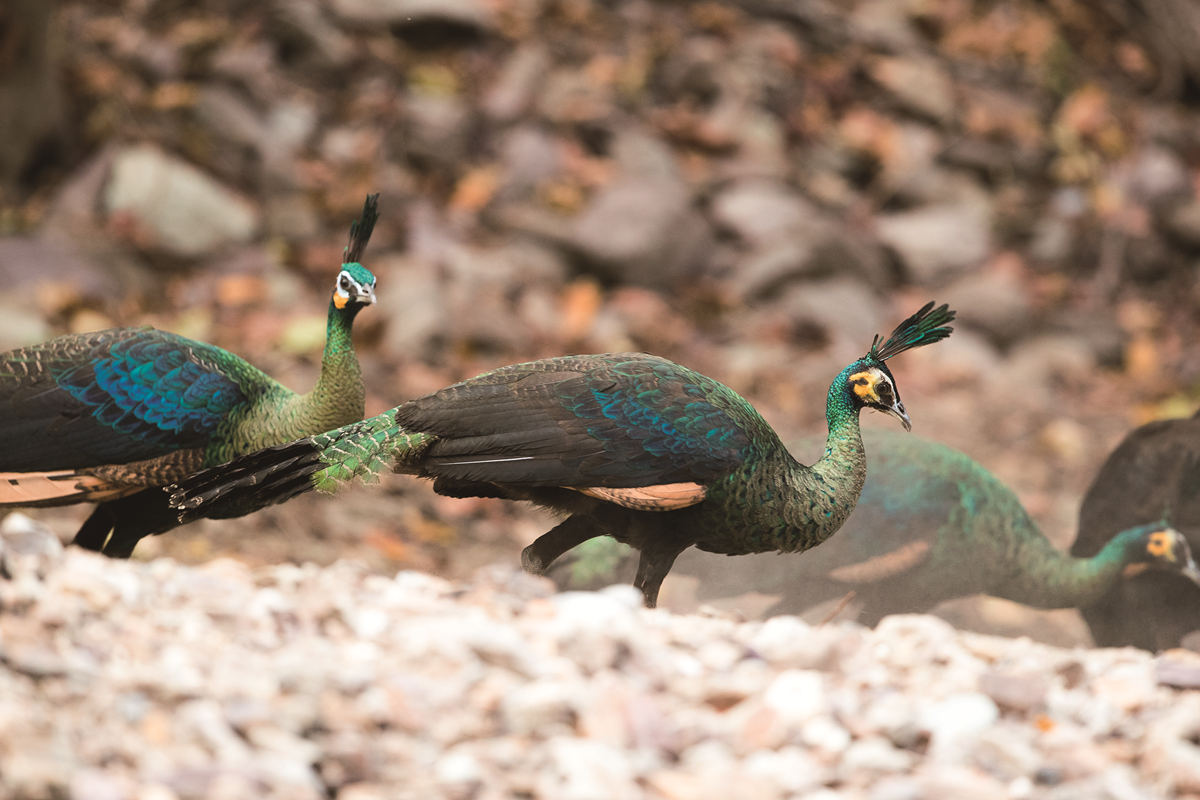The Last Stand of the Green Peafowl

Back in 2016, Gu Bojian, who was pursuing his master’s degree at the Xishuangbanna Tropical Botanical Garden of the Chinese Academy of Sciences, conducted a survey of the monsoon forest in the valley of the Luzhi River in southwestern China’s Yunnan Province. A bird lover, Gu was well aware that the green peafowl, the only peafowl species native to China, could be found there. He learned during the trip that construction of a hydroelectric station near a nature reserve in the region would submerge the largest and most intact natural habitat of the green peafowl in China. The bird was listed as “endangered” in China Red Data Book of Endangered Animals. The population of the green peafowl in China was less than 500, making them even rarer than giant pandas, according to data from 2014 to 2017 released by the Kunming Institute of Zoology.
To seek a way to save the last home of green peafowls, Gu approached the Friends of Nature, Wild China, and other environmental non-governmental organizations (NGOs). In July 2017, my organization, Friends of Nature, filed a lawsuit against the companies responsible for developing the Jiasa River Hydropower Station, demanding a permanent halt to its construction. However, billions of dollars had been invested in the project, and the developers didn’t give in. Such a lawsuit was destined to be a long-term struggle.
We set up an investigation team consisting of botanists, zoologists, lawyers, photographers, and outdoor explorers to gather evidence in the hinterlands of the green peafowl habitat. The mountains and forests were so remote that we had to raft through rushing rapids and past shoals to reach the area to conduct the investigation.

The Friends of Nature team rafts across the dangerous shoals to reach the habitat of green peafowls deep in the mountains. courtesy of Friends of Nature
We ventured deep into unchartered areas again and again, and our efforts yielded promising results. We found green peafowl footprints on the beach and their feathers in the jungle. We set up infrared-triggered cameras in the habitat and captured photographs of many green peafowls. Everything we found was submitted to the court as precious evidence. Our three years of hard work eventually paid off. Construction on the Jiasa River Hydropower Station was suspended in March 2020, temporarily saving the green peafowl’s home.
Revision and implementation of China’s Civil Procedure Law in 2012 marked the establishment of a public interest litigation system in the country. China’s first preventive public interest civil lawsuit aiming to protect endangered wildlife, the victory of the green peafowl case evidenced the country’s transition from “coordinated economic and environmental development” to “environmental protection first.”

Zhang Boju is director-general of Friends of Nature, an environmental NGO based in China.
Not long has passed since the introduction of China’s revised Environmental Protection Law in 2015, but Friends of Nature has witnessed marked improvement of China’s framework for environmental public interest litigation after filing 49 lawsuits in recent years. The country’s courts used to know little about environmental impact lawsuits, but they have gradually accumulated experience after hearing such cases. Years ago when the public interest litigation system had just emerged, most defendants would impatiently ask the judge, “Who is suing me? What is he trying to get from me?” They didn’t bother organizing defenses and just tried to avoid going to court. Over the past two years, however, we have seen more defendants hire environmental lawyers to prepare a robust defense on merits. This is great progress.
Environmental NGOs will keep working to safeguard the last habitat of the green peafowl since the court only issued a temporary injunction to suspend construction of the dam. Luckily, we are not alone on this journey. Many reporters, artists, science enthusiasts, educators, and publishers have been joining us in telling the story of the green peafowl to more people in different ways.